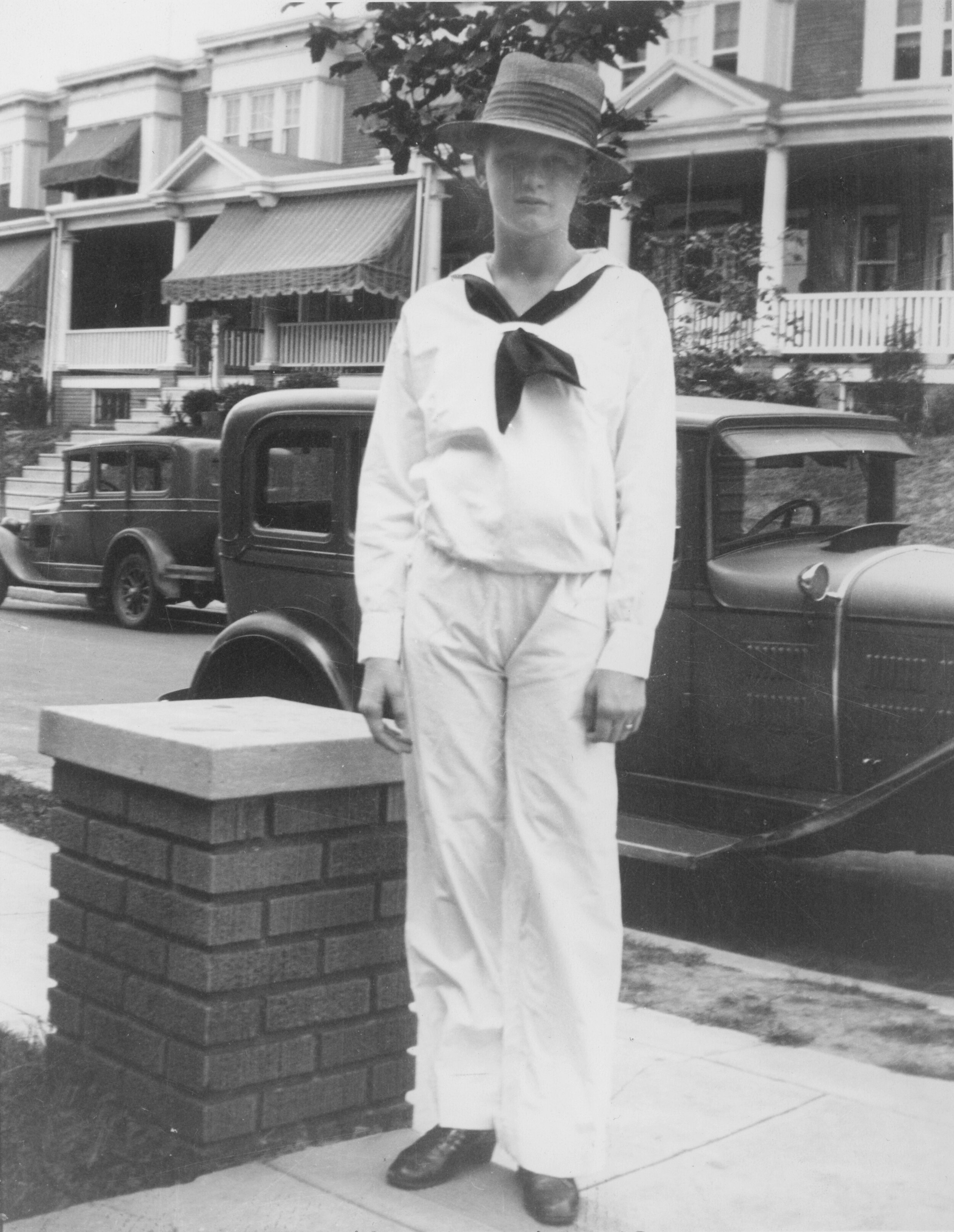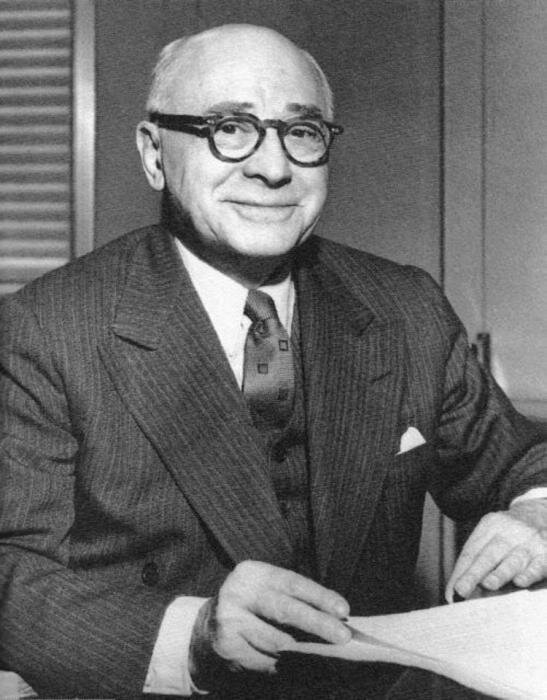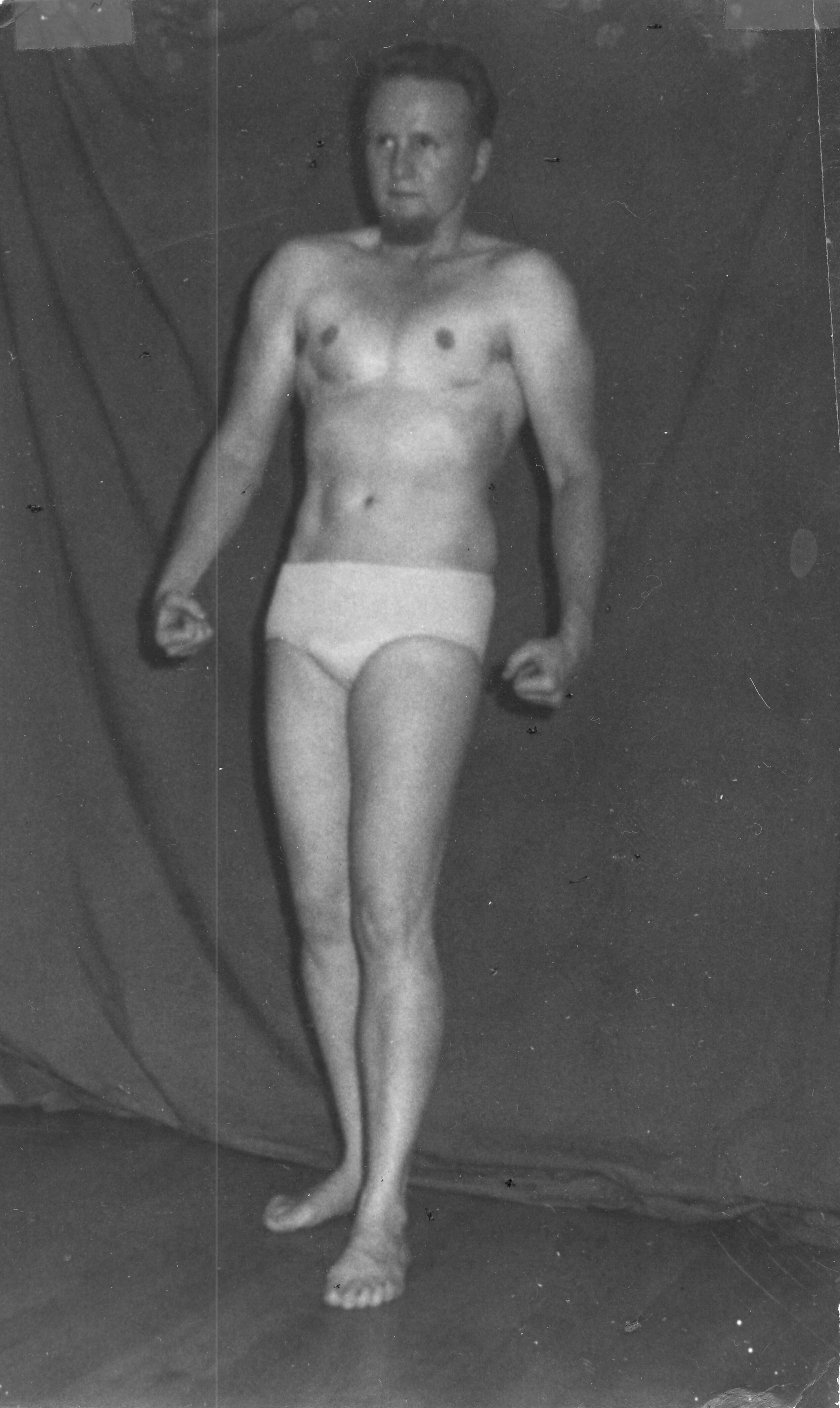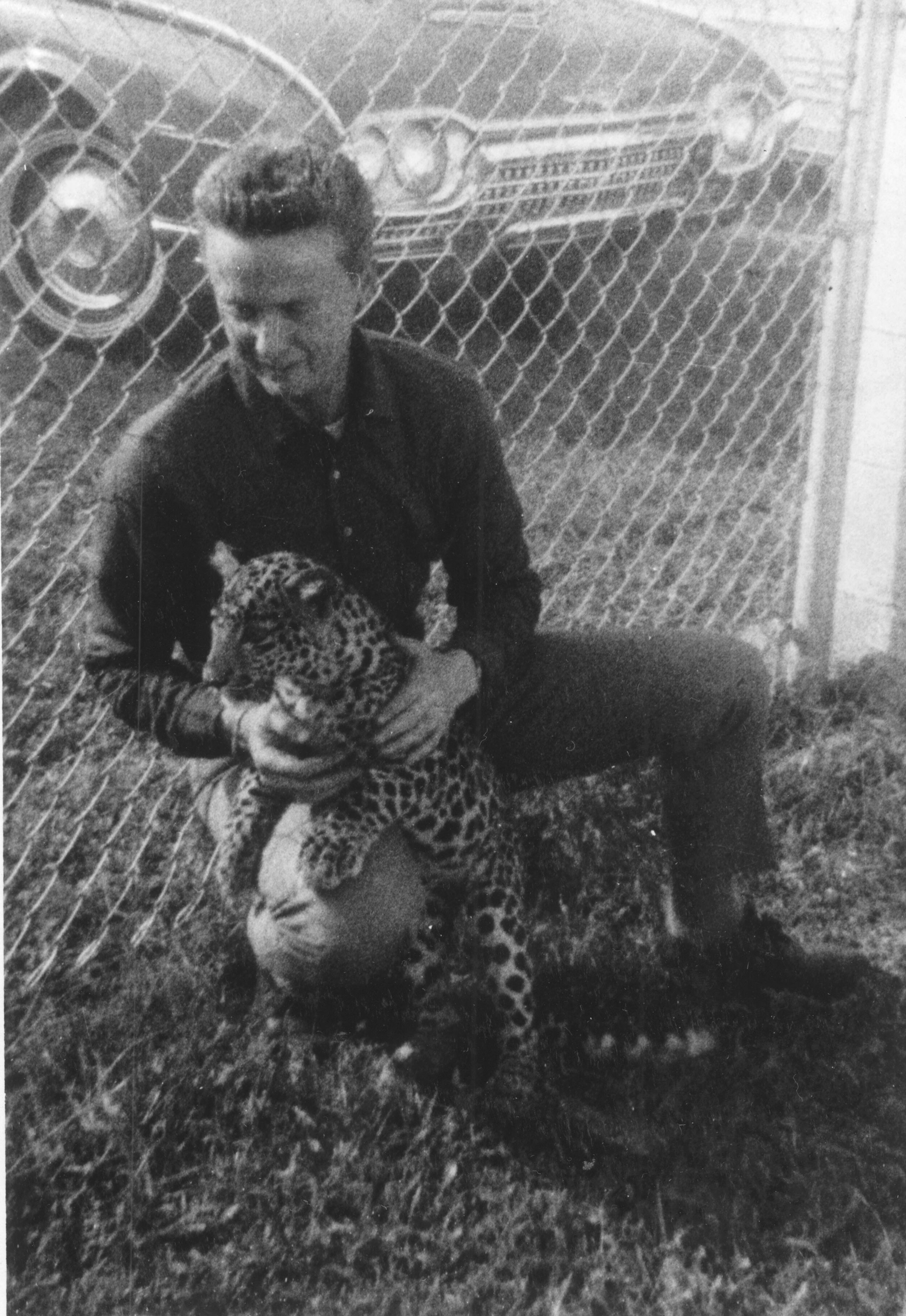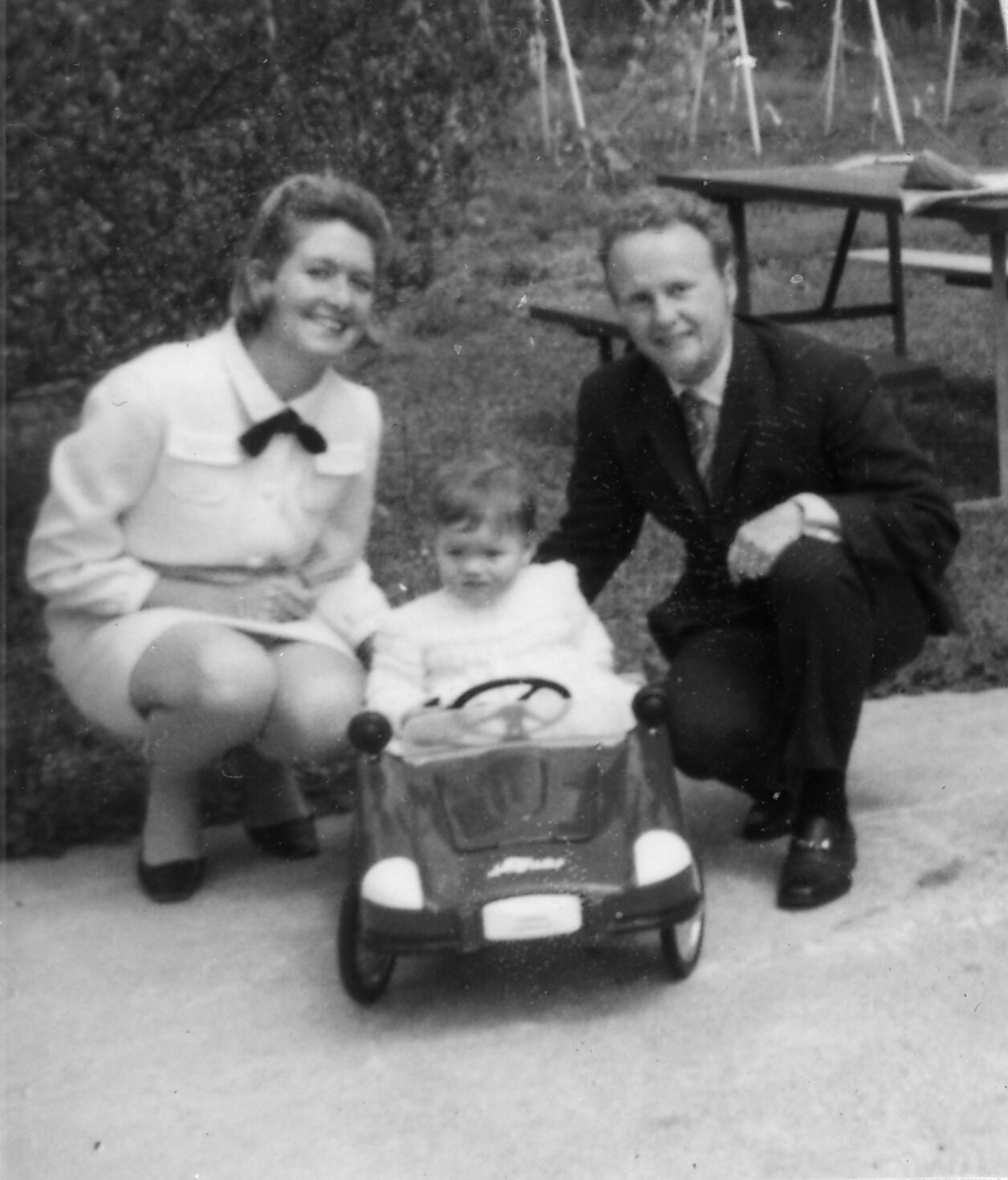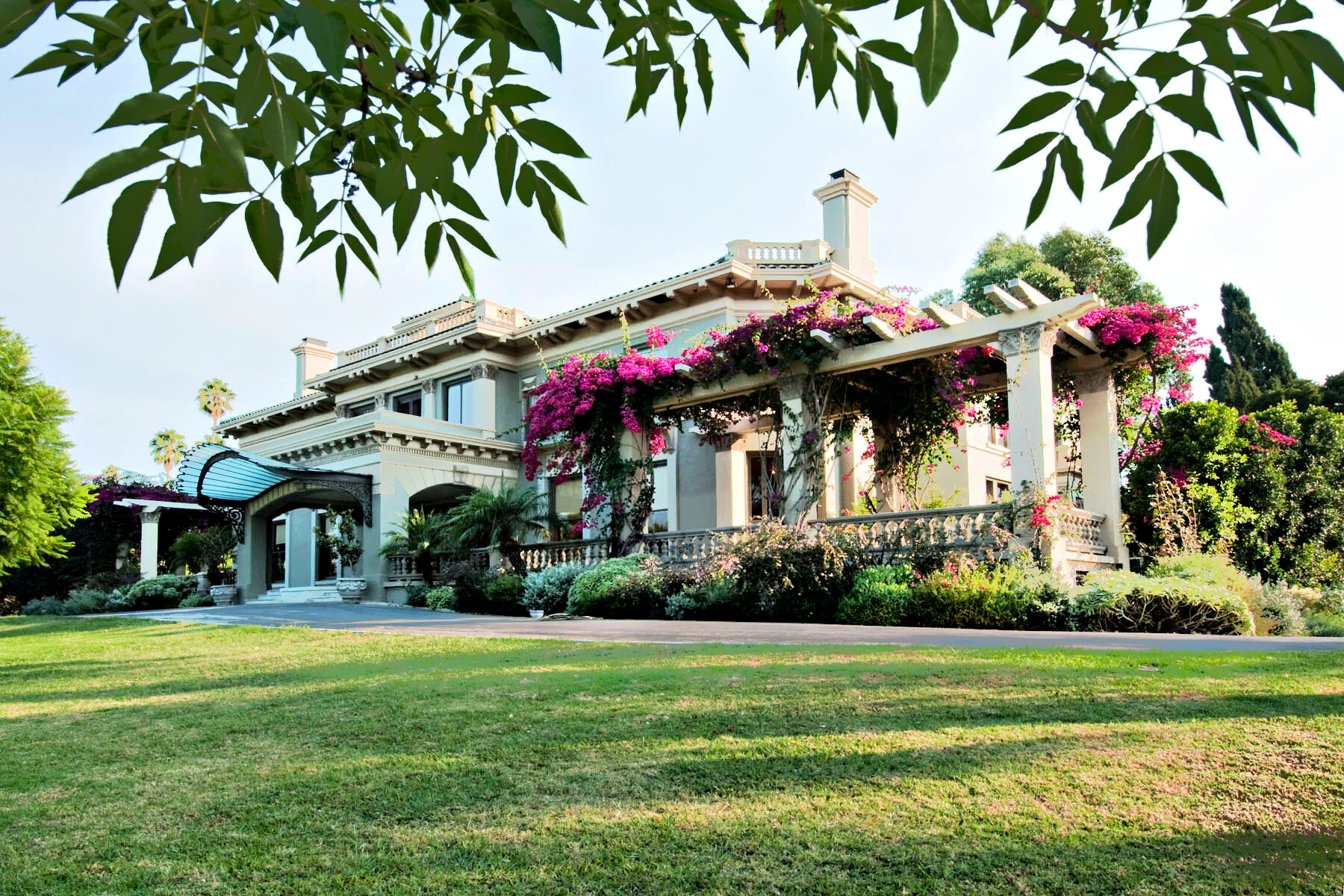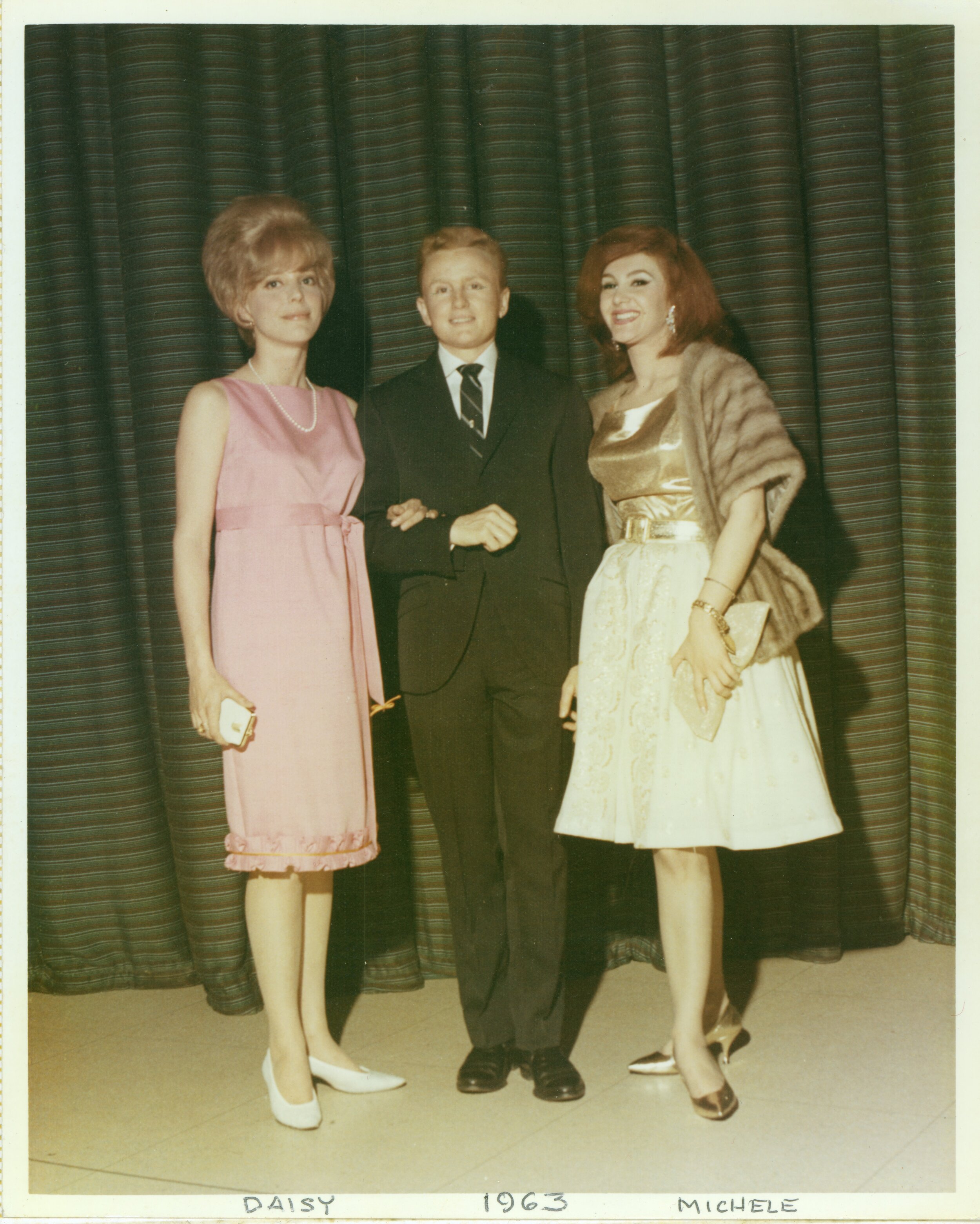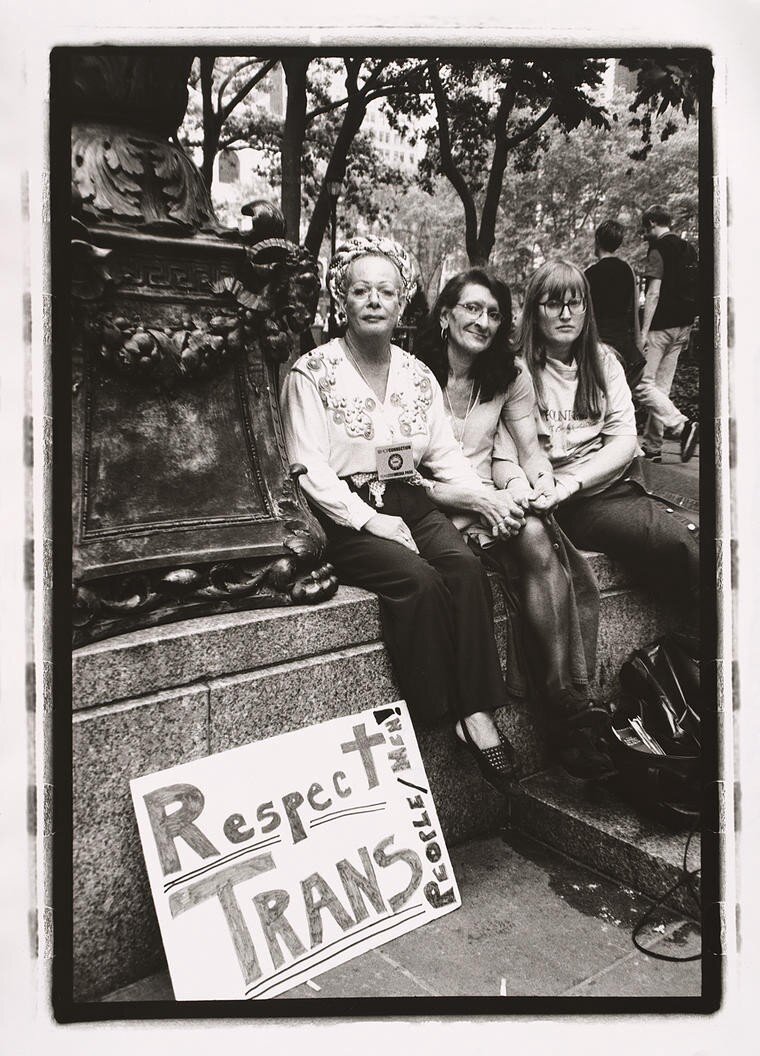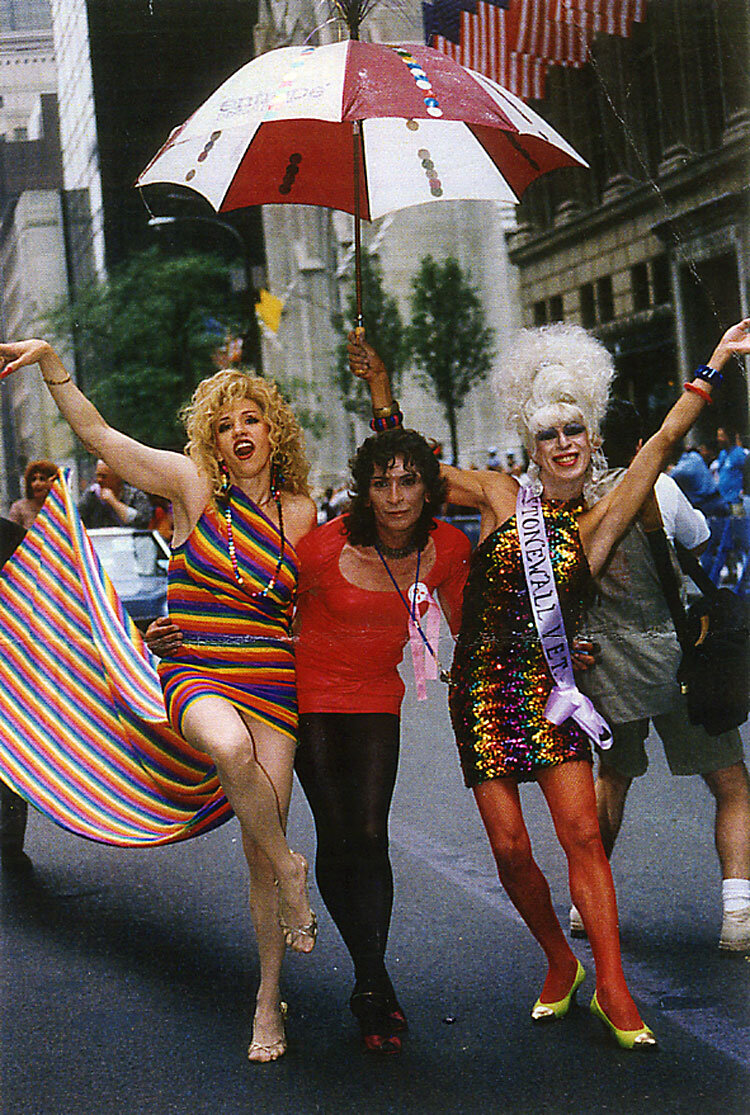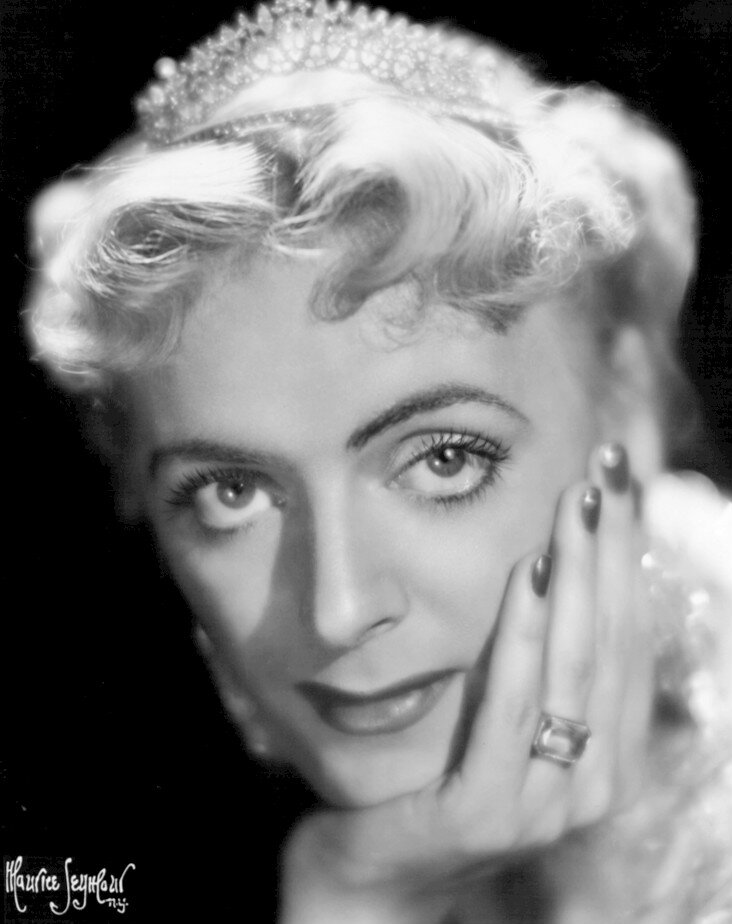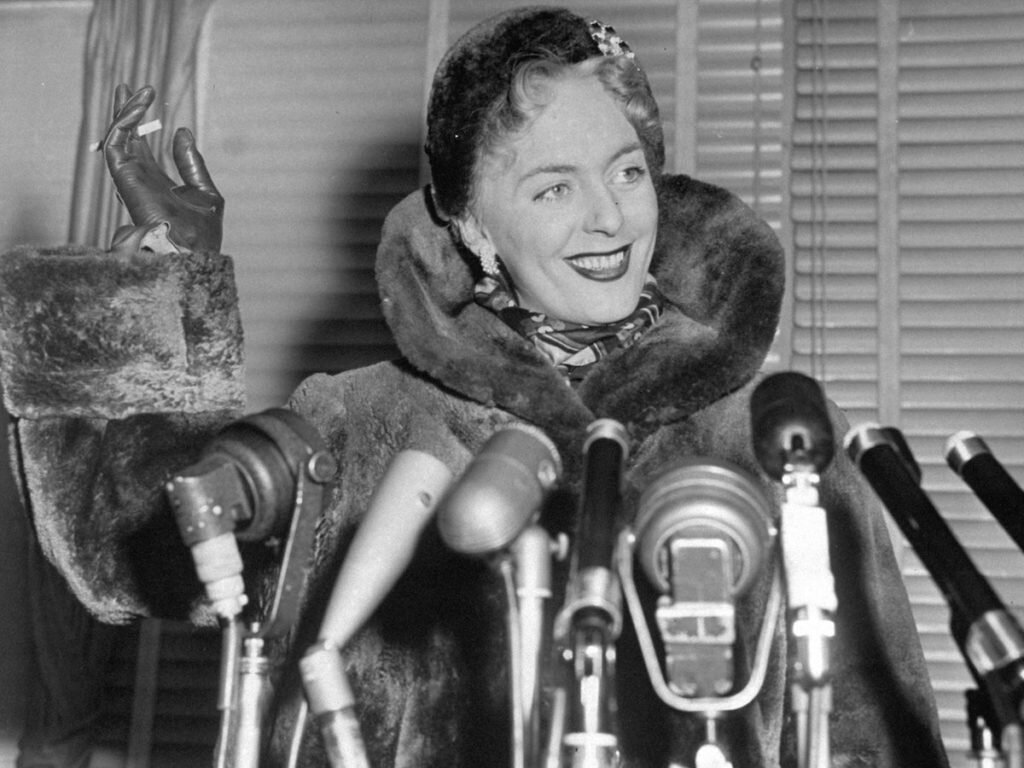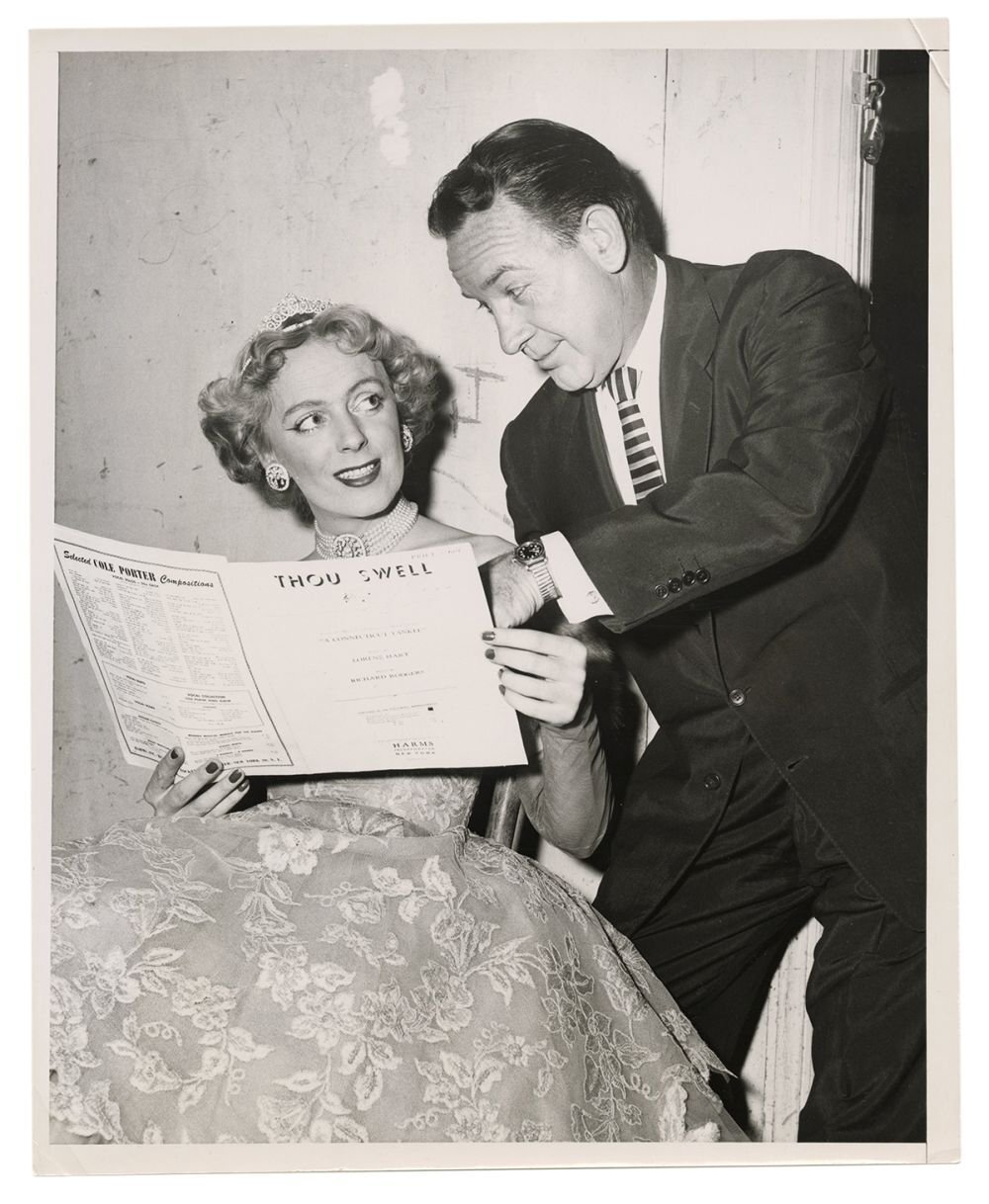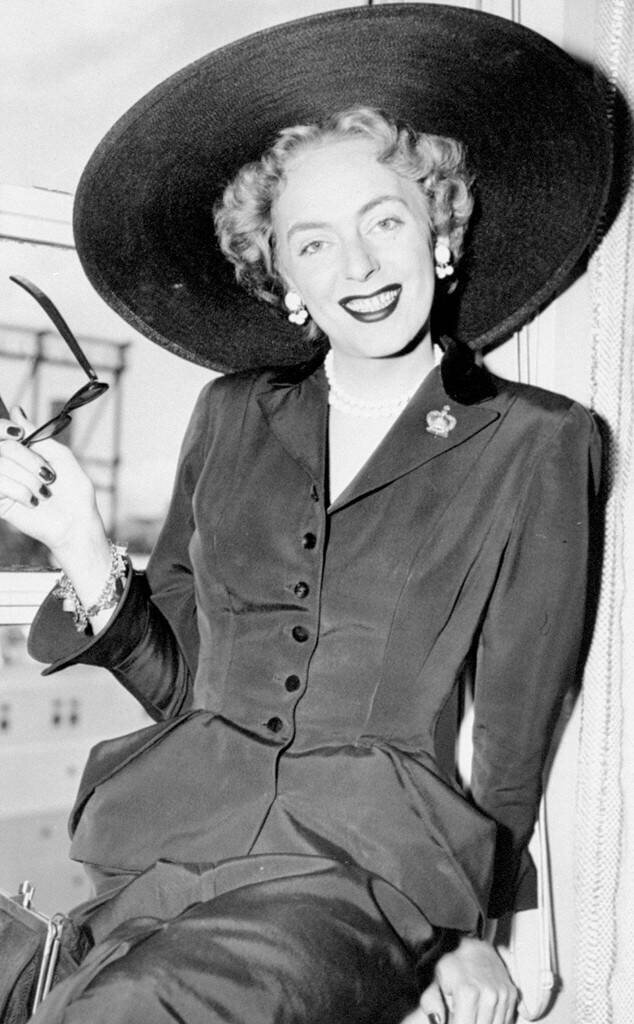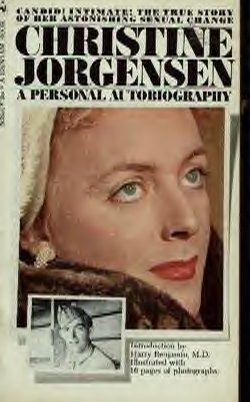Trans Figures in History Pt. 3: Reed Erickson
After a much needed mini hiatus from writing, I am back with my third installment of Trans People in history. Don’t forget to go back and read the other installments to this series and tell your friends! Sign up for notifications when I make new posts as well. Enjoy!
Reed Erickson
After a much needed mini hiatus from writing, I am back with my third installment of Trans People in history. Don’t forget to go back and read the other installments to this series and tell your friends! Sign up for notifications when I make new posts as well. Enjoy!
If you look at the lives of queer people in the 20th century, the lives they led were ones that were constantly hanging in the balance. You were one wrong move away from loosing everything. Being in the wrong place at the wrong time or having the wrong person find out the truth about you could leave you ostracized, impoverished, without family, hurt, or dead. You had little to no government protection and the road to becoming yourself and accepting yourself was treacherous (if you ever got to the point of accepting yourself at all). Walking that fine line between your truth and utter ruin led many queer people to hide.
For trans people of this time you were without many friends, support, or a platform on which to advocate for yourself. Even those within the queer community were reluctant to help or saw the trans community as a blemish that would ruin things for everyone else. To be quite honest, their understanding of gender identity and expression was just as primitive as everyone else's during that time. To be openly trans and proud was a dangerous endeavor and you didn’t always have the resources to survive or have your voice truly heard. Trans people like Marsha P. Johnson and Sylvia Rivera, though outspoken in their demand for equal rights for the gay and lesbian community and outspoken in their involvement in the gay rights movement, found themselves rejected, unsupported, and even hated. How do you survive when the world is against you in every aspect?
Like Christine Jorgensen, Reed Erickson was dealt an unbelievably lucky hand in life. He was an out and accepted trans man. Not only was he able to lead a full life but he did it with millions of dollars at his disposal (a built-up fortune of $40 Million to be exact). Reed Erickson was born on October 13, 1917 in El Paso, Texas. He was born into a wealthy family where his father was a successful businessman who owned multiple companies. Though he was born in Texas he grew up in Philadelphia. He attended an all girls school in Philadelphia and then attended Temple University for a short time before the family moved to Baton Rouge, Louisiana where he attended Louisiana State University and was the first woman to receive a degree in engineering from that institution.
Also, like Christine, Reed proved that it was not a troubled childhood or mental illness that led to claiming a queer identity. During his youth in Philadelphia, Erickson enjoyed a slew of lesbian relationships and even joined a group of lesbian women which he became very close to and kept a connection with long after he left Philadelphia. His closest lesbian relationship was formed while living in Baton Rouge, where he met a woman who would become his partner of many years and influence him to become involved in left politics civil libertarian movements. It is documented that they attracted the attention of the FBI because of their association with certain people like Henry Wallace and Paul Robeson, and their connection to the Communist Party.
In 1962, after his father’s death, Reed Erickson took over his father's smelting business and around that same year started his transition to becoming male. He approached well known endocrinologist Dr. Harry Benjamin to oversee his transition. Dr. Benjamin would use the work that he did with Erickson (some work that was also funded by Erickson as well) to write his most famous piece of literature The Transsexual Phenomenon (1964), which would become one of the basis for the study of transgender people and gender identity. Dr. Benjamin himself would become well known for developing the standards of healthcare for trans people because of his overseeing of Erickson’s transition and would receive up to $100,000 ($775,000 in today’s money) in funding from Erickson for his research for his book. It's also important to note that he worked with and was one of the doctors who oversaw the transition of Christine Jorgensen about 10 years prior. You can read about her in my previous entry!
Erickson funded these philanthropic endeavors not just for his benefit but also for the benefit of other queer people across the country. This led him to start the Erickson Educational Foundation (EEF) in 1964. Its mission was “to provide assistance and support in areas where human potential was limited by adverse physical, mental or social conditions, or where the scope of research was too new, controversial or imaginative to receive traditionally oriented support.” Their goal wasn’t just to provide help to the LGBTQ community, but to the world as a whole.
With the help of Erickson’s funding, Dr. Harry Benjamin would develop the Harry Benjamin Standards of Care and create the Harry Benjamin International Gender Dysphoria Association (HBIGDA) which is known today as the World Professional Organization for Transgender Health (WPATH). The Harry Benjamin Standards of Care would be deemed the standard of care for trans health. Through this Benjamin made transgender health into a legitimate study. WPATH still exists today and serves the transgender and wider queer community. Erickson funded things like the first gender clinic at Johns Hopkins University, counseling for transsexual and transgender individuals, quarterly newsletters, educational pamphlets, books and even John Lily’s dolphin communication research (there is actually an episode of Drunk History about this). Zelda Suplee would be named the leader of the EEF and was best known for owning many nudist colonies and was credited as the first full frontal nude shot for Playboy Magazine.
The biggest achievement of Erickson and the EEF is the funding of one of the biggest organizations in the gay liberation movement, ONE Inc. ONE Inc. was founded in Los Angeles, California in 1952 by Dorr Legg and various others and by the 1960s had very serious financial troubles and was in dire need of funding. They were in jeopardy of losing their headquarters in LA. In 1964, Erickson met with Dorr Legg after seeing an ad they had placed asking for funding help and he agreed to fund them through the EEF. Through the EEF, ONE Inc. was able to set up a tax-exempt charitable division called the Institute for the Study of Human Resources (ISHR) where Erickson served as president until 1977. His second wife with whom he had two children with (one via IVF and one by adoption), Aileen Ashford, was also one of the directors of the organization and Dr. Harry Benjamin sat on the board of trustees. He would later have a falling out with ONE Inc. ending in a legal battle between he and Dorr Legg, starting in 1983, over the use of the $1.9 Million Milbank Estate which served as the organization’s headquarters. The case would not be settled until after his death by his daughter Monica.
Aside from his philanthropy, Erickson was also known to have had a rather eccentric personal life, owning multiple properties, exotic pets (his pet leopard Henry), marrying a total of four times (he was known to be quite the lady’s man), fathering two children and towards the end of his life suffering from drug addiction. He married his first wife Daisy Harriman Lewis in 1963 and after a year of marriage they divorced. In 1965 he married his second wife, Aileen Ashford and they lived in Mazatlan, Mexico where they lived in a mansion he called the Love Joy Palace. They had two children, Monica and Seth. In 1974, Reed began to experiment with drugs (mostly ketamine and cocaine) which then turned into an addiction. His drug addiction caused his marriage to Aileen to end in 1974. He married for a third time to Evangelina Trujillo Narkis (Eva) in 1977. Together, they moved to Southern California to be closer to his children. His marriage to Eva dissolved between 1983 and 1985. Fleeing drug charges, he moved back to and married a fourth and final time to Maria Luisa de Celis Contreras in 1987. With his health continuing to fail he passed away in 1992 at the age of 75.
Reed Erickson left behind an extraordinary legacy of philanthropy that he, from behind the scenes, used to support not just the Gay Rights Movement but the queer movement as a whole. So much research that was funded by him helped shape transgender healthcare and helped American society better understand that the queer community consisted of people who were just like everyone else and deserved to be treated as such. The fact that he was able to exist unapologetically in the 20th century was most definitely a feat in itself (with his wealth being a huge part of that acceptance according to some sources). It amazes me that he has been hidden in queer history considering his contribution to one of the biggest gay organizations in the Gay Liberation Movement, but it has been an amazing and eye-opening discovery none the less. I believe that he had been gifted the means to live freely by birth and simply wanted to give other trans people the ability to do the same. Don’t forget to click on the many links I’ve put throughout the article to get more information!
Trans Figures in History Pt. 2: Sylvia Rivera
Sylvia Rivera
It is not often that we get to hear about the contributions of queer people of color to the queer community throughout history. So often our stories are forgotten and placed on the back burner. Our place within the community has always been one of a supporting role. We speak but aren't always heard. The outside world doesn’t realize that the queer community is permeated with racism, bigotry, prejudice, and discrimination, just as much as the rest of the human race. We too are averse to anything different and scoff and discount those who don’t fit our norms, especially when it comes to beauty standards. We are a product of the teachings of our society. When looking at the early gay liberation movement of the 1950s and 60s, it was dominated by white, cis-gender, middle class people and that was the point of view that was given all the weight. Intersectionality was barely a thought or even pushed for.
The point of saying this is not to discount the hard work and sacrifice of those who put their lives on the line to give us the progress we enjoy today. The many trailblazers like Martha Shelley, Chuck Rowland, Jean O'Leary, Barbara Gittings, Frank Kameny, and so many others laid a foundation for queer people to be heard on the national stage. They started organizations, lead marches and protests, and pushed for legal reform to help give queer people of this country a better life. However, we would be amiss as a community not to acknowledge the fact that even though queer people of color contributed to the movement, they were not always included in the greater conversation about what true liberation is and the intersectionality that lies within it. That being said, it is important to include people of all races and gender identities in the fight towards liberation and equality. Yes, queer people are a marginalized group that is discriminated against and oppressed on many levels but when you are queer and a person of color there are extra layers that you must navigate. Our experiences, compared to our white counterparts are the same in some ways but different in many.
Sylvia Rivera was a champion for queer people of color in the early gay liberation movement and even more specifically transgender, gender non-conforming, and non-binary people within the community. She was brass, fearless, and disrupted the goings on of the movement at that time in the best possible way. Sylvia Rivera was born on July 2nd, 1951 in the Bronx, New York to a Puerto Rican mother and Venezuelan father. Her father abandoned the family after her birth and her mother committed suicide when she was three so she was raised by her grandmother. Her grandmother beat her for her effeminate ways. It was also stated that Sylvia had shaved off her eyebrows and started wearing makeup to school in the 4th grade. Tired of the abuse at home and in school, Sylvia ran away from home at the age of 10 to 42nd street where she formed a bond with the queer community there. It was there that she started her life as a sex worker. It was very common then and still is today for transgender people to do sex work as a source of income since they are so often discriminated against in the workplace and have hard times either getting or keeping a job.
During this time period it was very common for LGBTQ people to be harassed and abused by the police and even more so if you were transgender or gender non-conforming. There were laws in many states that stated that if you were found to be wearing more than 3 or 4 items of clothing of the opposite sex you could be arrested. Sylvia and many of her friends were subjected to constant harassment and imprisonment because of it. She spent 90 days on Rikers Island as well. It was police brutality and harassment that sparked the June 1969 Stonewall Riots where Sylvia got her first taste of activism at the age of 17. She was the second person to throw a Molotov cocktail at Stonewall.
Even though Sylvia was involved in activism with groups like the Gay Liberation Front (GLF) and the Gay Activists Alliance (GAA), her presence in these groups was not always welcome. She consistently challenged the way these predominantly white middle class and cis-gender organizations were run and wanted them to include transgender people and people of color in the conversation. She was known for being the most outspoken in meetings, relentless with her criticism, and for having a big temper when she felt she wasn’t being heard. To everyone else in GLF and GAA she was a threat mostly because she didn’t come from the same background as most members and was a part of and speaking up for a group within the community that was constantly ignored. I have my own personal theories as to why people of color and transgender, gender non-conforming, and non-binary people struggled within the community. There were multiple factors working against them, the biggest being racism, misogyny, and lack of understanding about human sexuality and gender identity during this time period.
When you look at racism in America, we are all, for the most part, under the same classical conditioning when it comes to how we view members of another race. White people are viewed differently from black people and Latinx people viewed differently from Black and White people and Asian people viewed differently from Black, White, and Latinx people and so on and so forth. These perceptions present biases, prejudices, and discrimination, some recognizable and some more hidden due to the deep weaving of racism into the American fabric. The only thing that may differ between humans is the ability to recognize these prejudices and address them accordingly. It's always interesting to find straight people who are shocked that this is even an issue within the queer community. My mother was shocked and baffled when I talked to her about it.
I believe that many queer people (and I will speak from the viewpoint of a gay man because that’s the viewpoint I know best) think that they are somehow absolved of this way of thinking because we are a marginalized group. I could go into all of the ways that gay men deny their racist tendencies but that would be a whole other essay in itself. In short, these people are wrong. We are capable of the same racist tendencies as straight people and the sooner we realize that the better. I believe that part of Sylvia’s mistreatment in these groups was due to the fact that the white members of these groups looked at her and saw a poor person of color who they felt was uneducated, too loud, and too critical of their flaws and unrecognized biases, and their unchecked racial prejudices took hold. They discounted her and denounced and refused to take her or her message seriously. Mix that with the constant push back they received from her on many issues and there’s no longer a reason to wonder why they wanted her silenced.
I believe that misogyny and ignorance about human gender identity played a huge role because at this point in history (the 1960s and 70s) the American public had very primitive knowledge of what it meant to be male and female. We were stuck in the gender binary. People were starting to understand homosexuality more and more because of not just the advocacy and exposure they were receiving pertained to it but also because of the extensive research that had been done to prove homosexuals well acclimated and functioning members of society. They were a long way from being fully accepted but they were definitely farther ahead than transgender, gender non-conforming, and non-binary people in terms of acceptance. Neither the straight or queer community as a whole could accept her as a woman, therefore they could not accept her as a human being and overlooked her. Lesbian feminists especially did not like or accept her. For a very long time Sylvia regarded herself as a drag queen and many lesbian feminists felt drag queens were a mockery of women in the worst way and I believe that that also did not help her cause with them.
In 1970, Sylvia, alongside one of her closest friends, Marsha P. Johnson, started an organization called the Street Transvestite Action Revolutionaries (STAR). The organization was devoted to helping displaced queer youth. Sylvia and Marsha rented out a building at 213 Second Avenue in New York and provided food and shelter for queer homeless youth who were a relatively overlooked at risk group within the community at the time. Over the 2 to 3 year lifespan of the organization, Sylvia and Marsha struggled to support their kids and pay the bills. They would reach out to the wider gay community for financial help but were always ignored. While still involved with STAR Sylvia was also a member of a Puerto Rican activism group called the Young Lords. They welcomed Sylvia with open arms and treated her struggle as their own. Because of her involvement in the group, she was able to bring in lesbian and gay members.
Frustrated with not just her treatment by the gay organizations and community she served but also the treatment of people like her, Sylvia gave a powerful and historical speech at the 1973 Christopher Street Liberation Day Rally later named "Y'all Better Quiet Down". Greeted with relentless boos and having to fight her way to the stage the entire day, Sylvia called the gay community out for their disregard for transgender people and people of color and pointed out that while they tried to fight alongside their white and cis-gender counterparts, they were met with indifference and hatred. Completely exhausted after this speech, Sylvia shut down STAR and took a 20-year hiatus from activism moving to upstate New York and taking a job at a grocery store. In the 90s Rivera would be asked to participate in a number gay pride events but, in a way, she felt that the movement had mostly forgotten about her and would simply pull her off the shelf, dust her off, use her for these various events, and then put her back on the shelf again. There were some who truly did understand her contribution to the movement but to the wider population her work would go mostly unnoticed. Throughout her life Sylvia would struggle with addiction and homelessness until her death in 2002 from lung cancer. In that same year the Sylvia Rivera Law Project would be started in an effort to provide support and legal aid to those who wished to express their gender identity freely.
I feel as though Sylvia Rivera’s story is a very good indication of how far the queer community has left to go until we are all treated with respect. Like many other marginalized groups, we also have the tendency to oppress those within our community and it is a good thing to remind ourselves of that and to think about our actions, our words, and our thoughts. Many conversations need to be had. Sylvia’s story is also a testament to how much we must value trans lives and even more specifically the lives of trans women of color. It is more important now than every before to listen to people of color when they speak. What we speak is truth. What we speak is real and what we speak is valid!
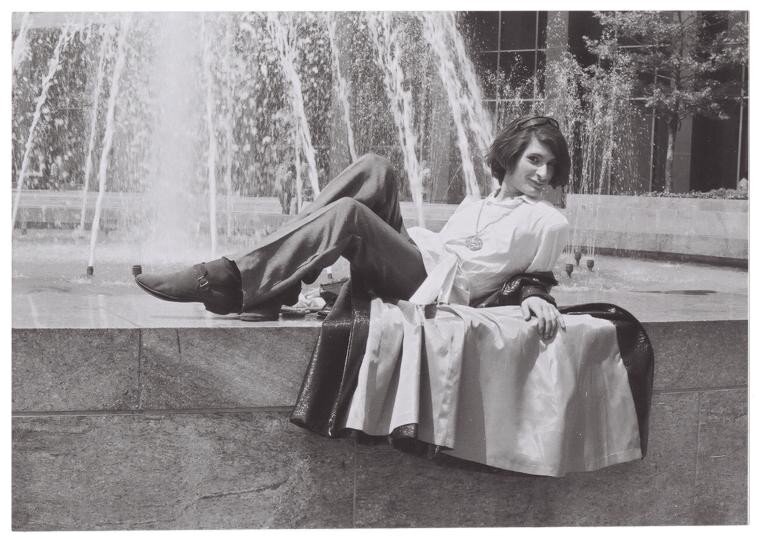
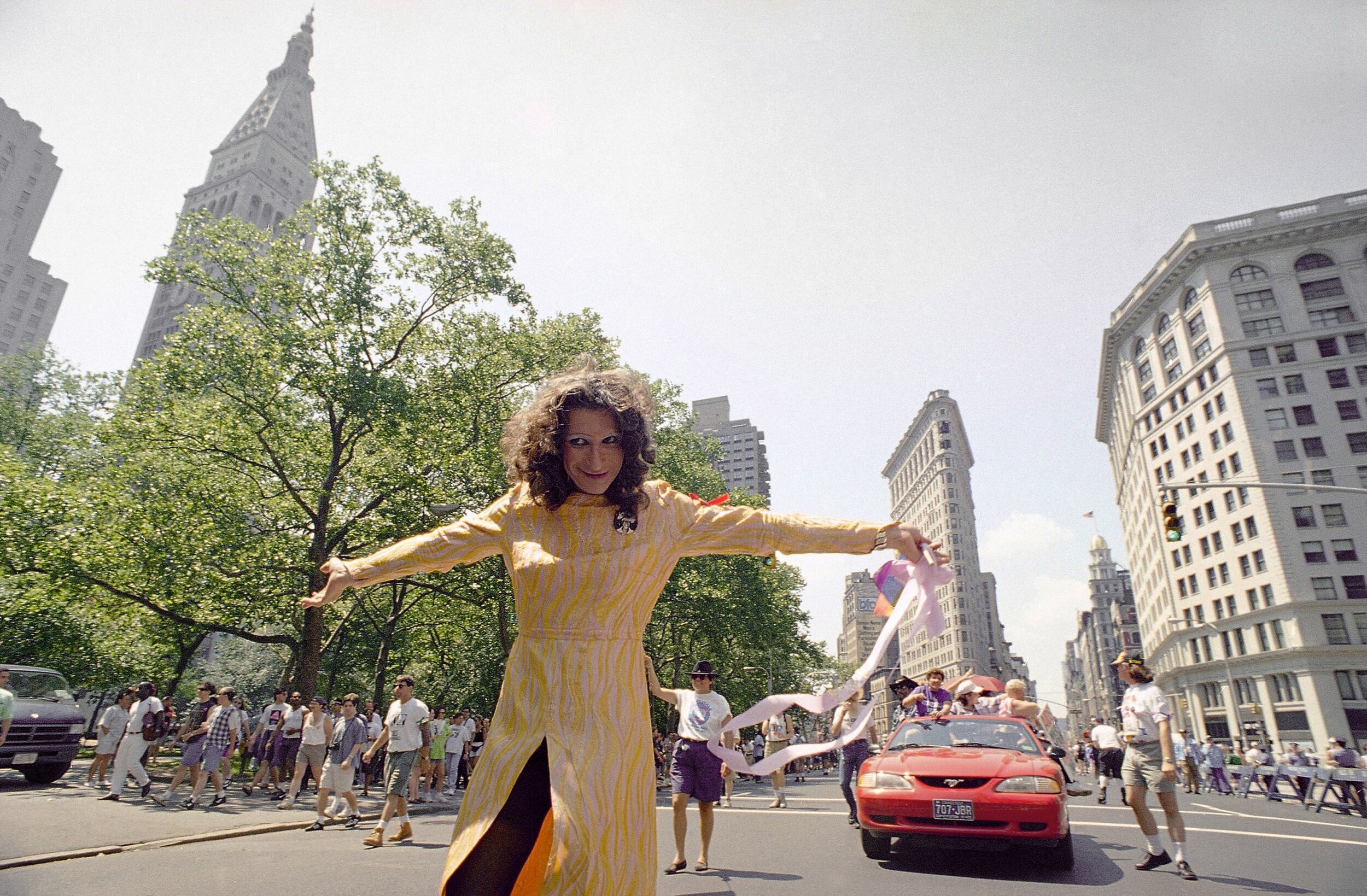
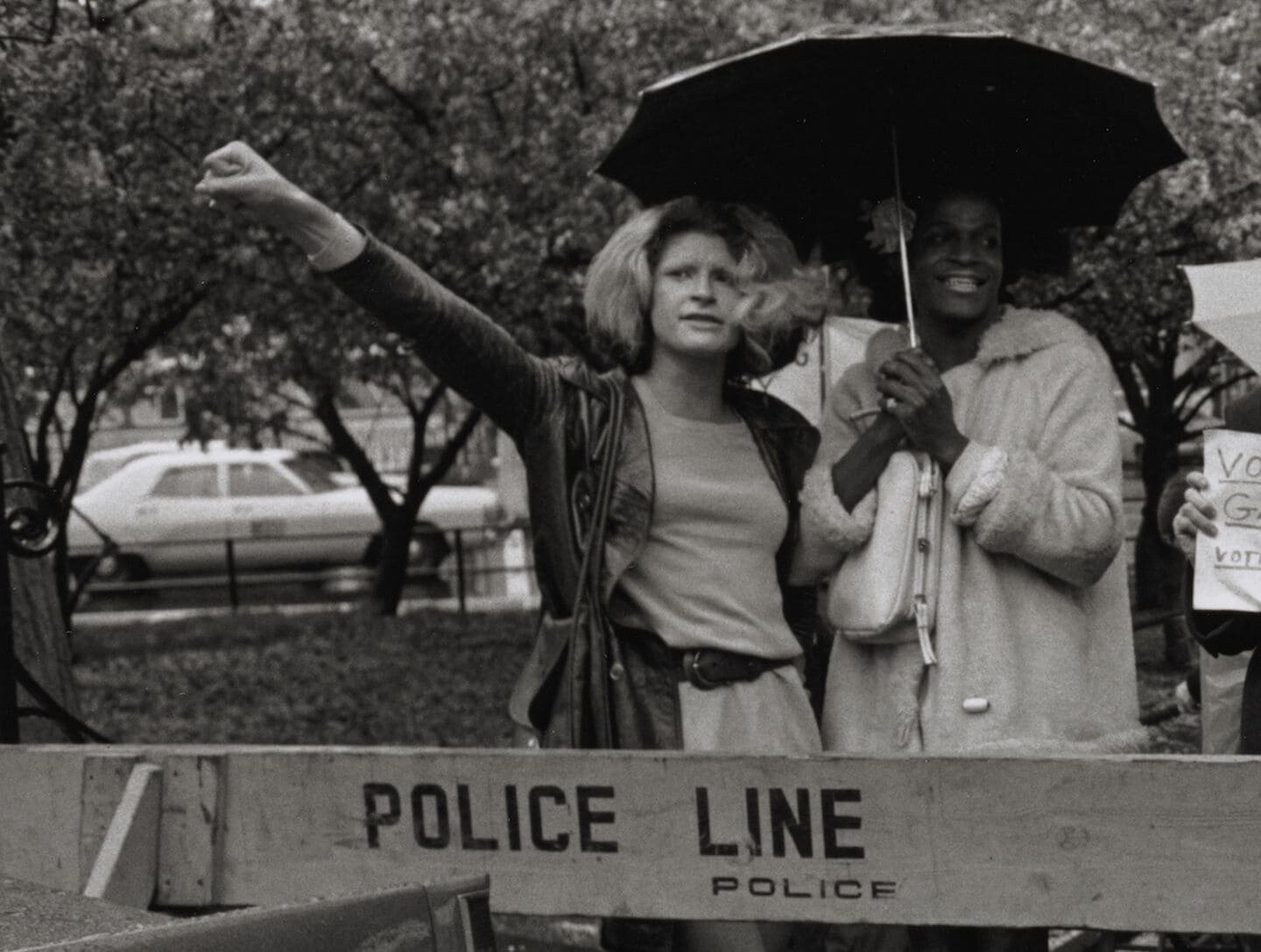
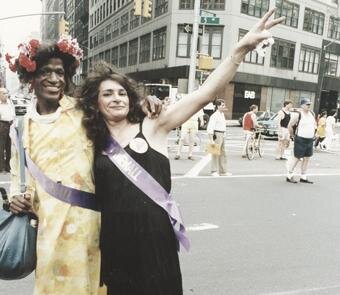
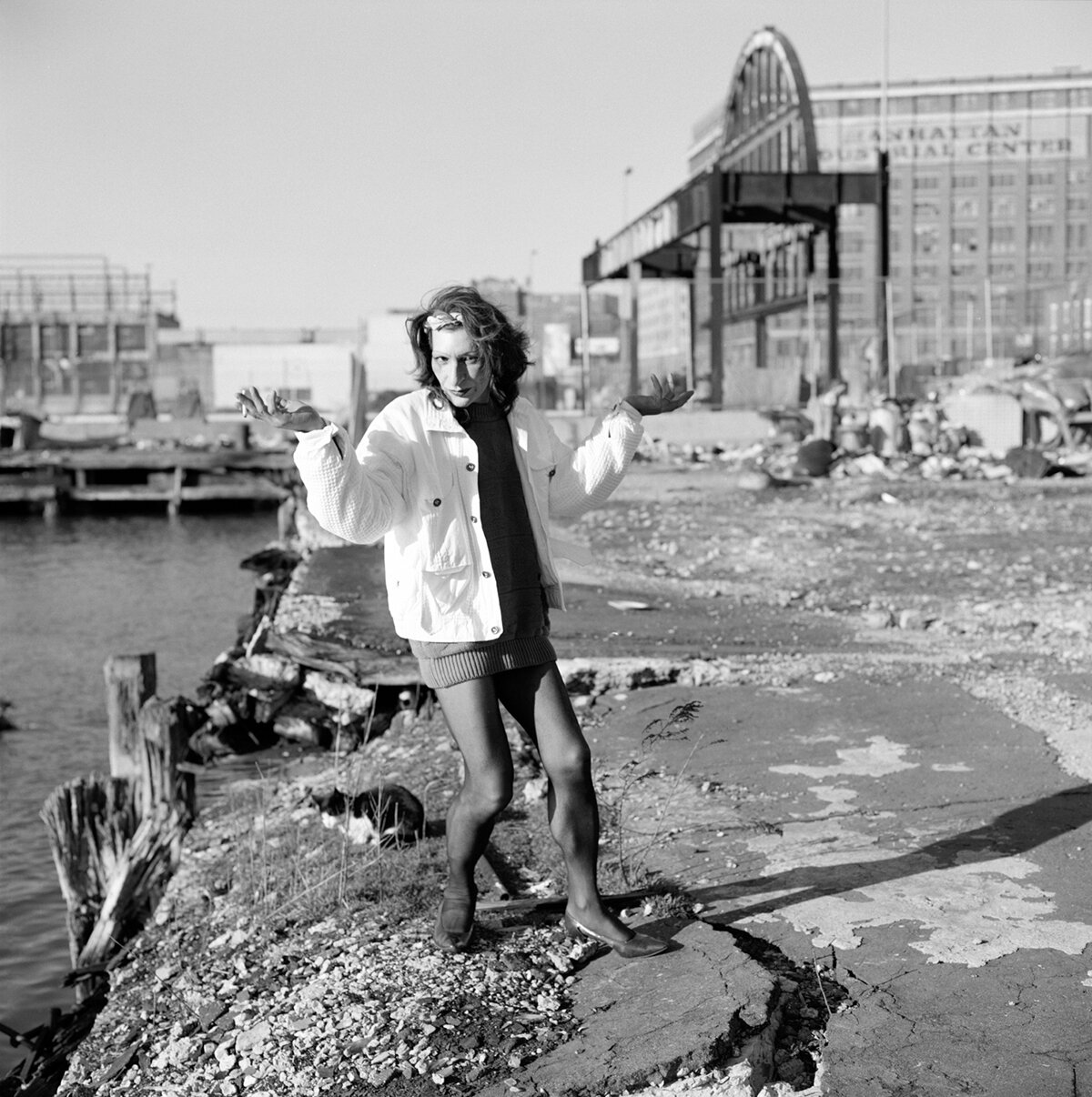
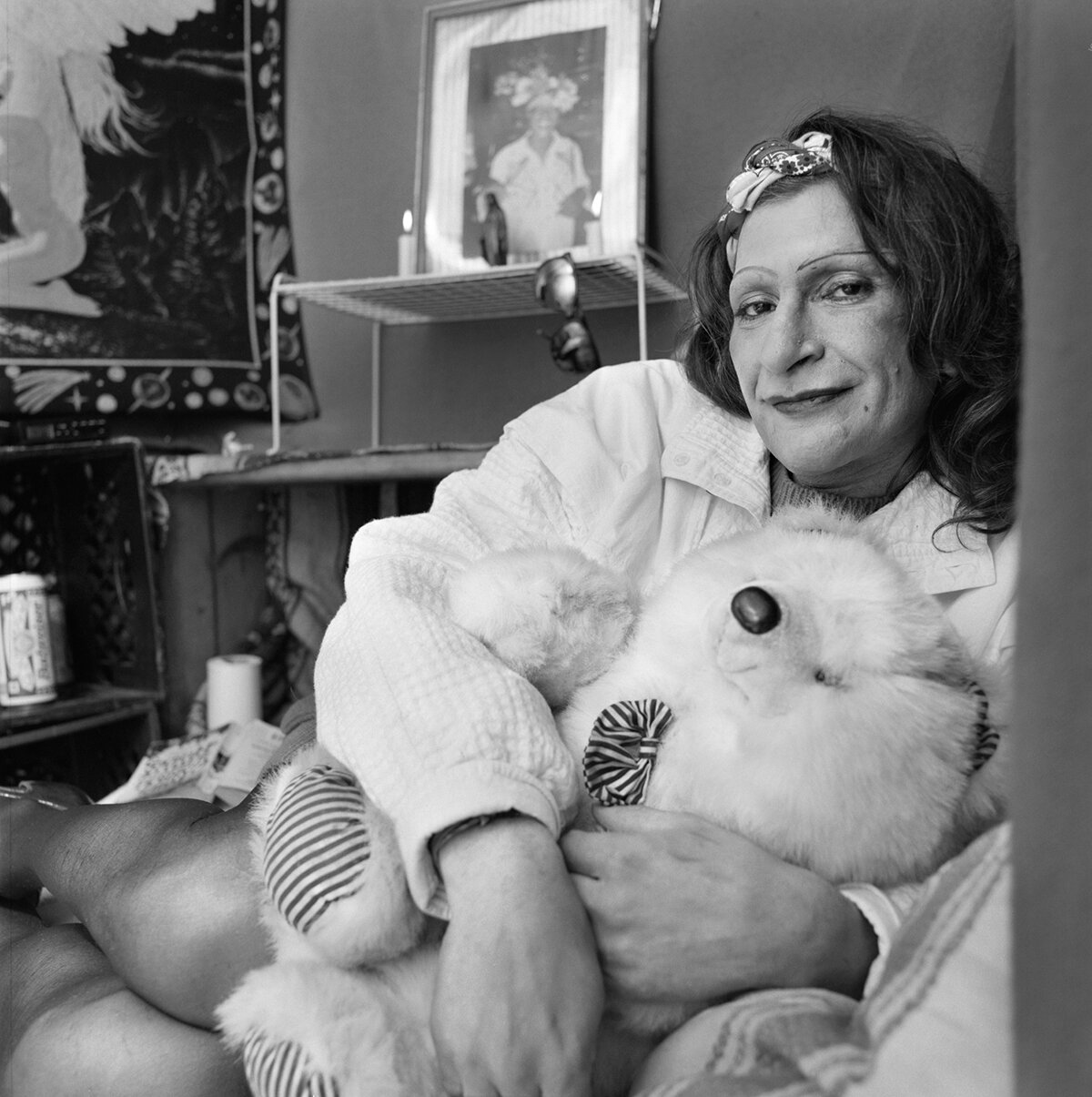
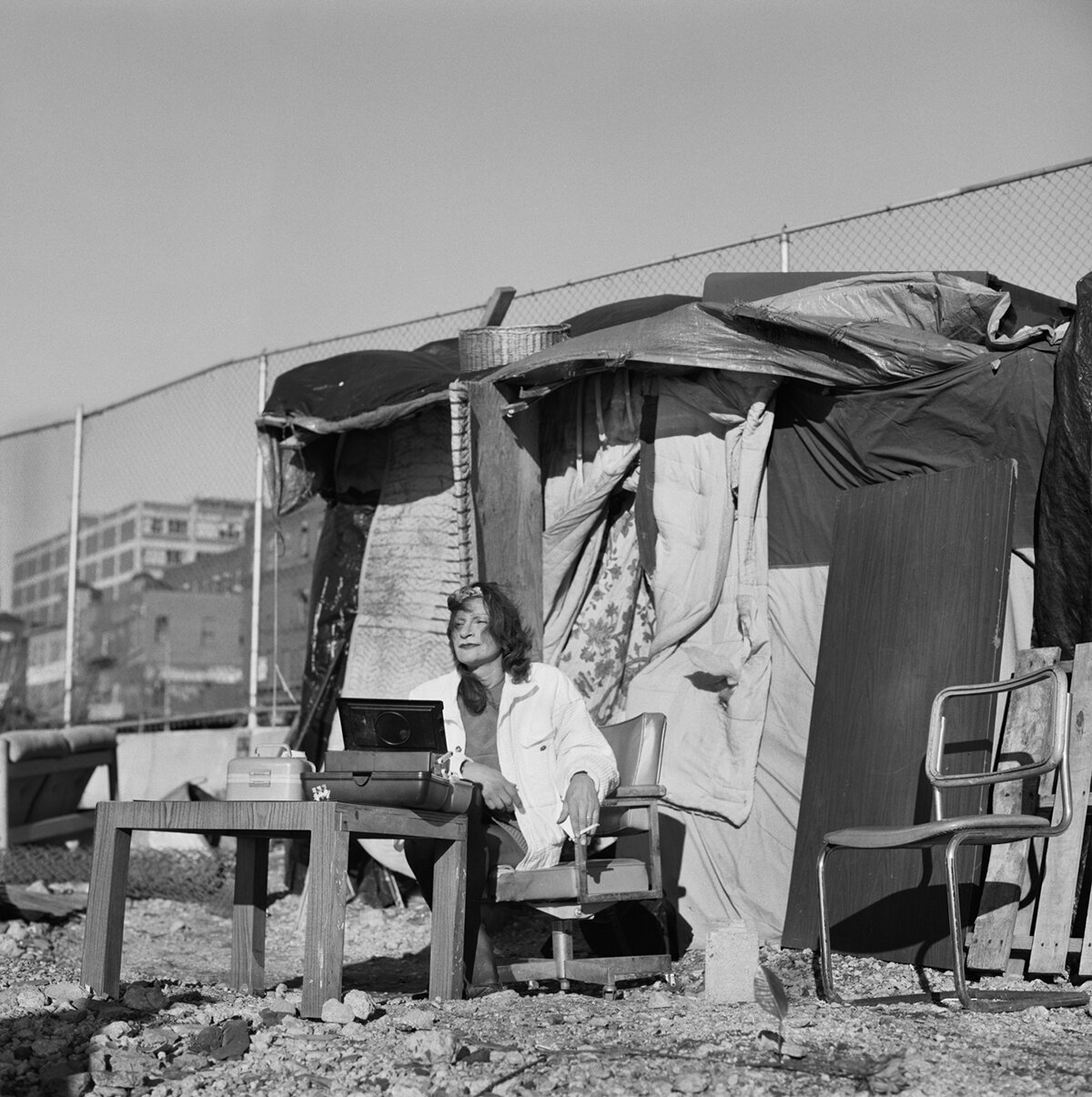
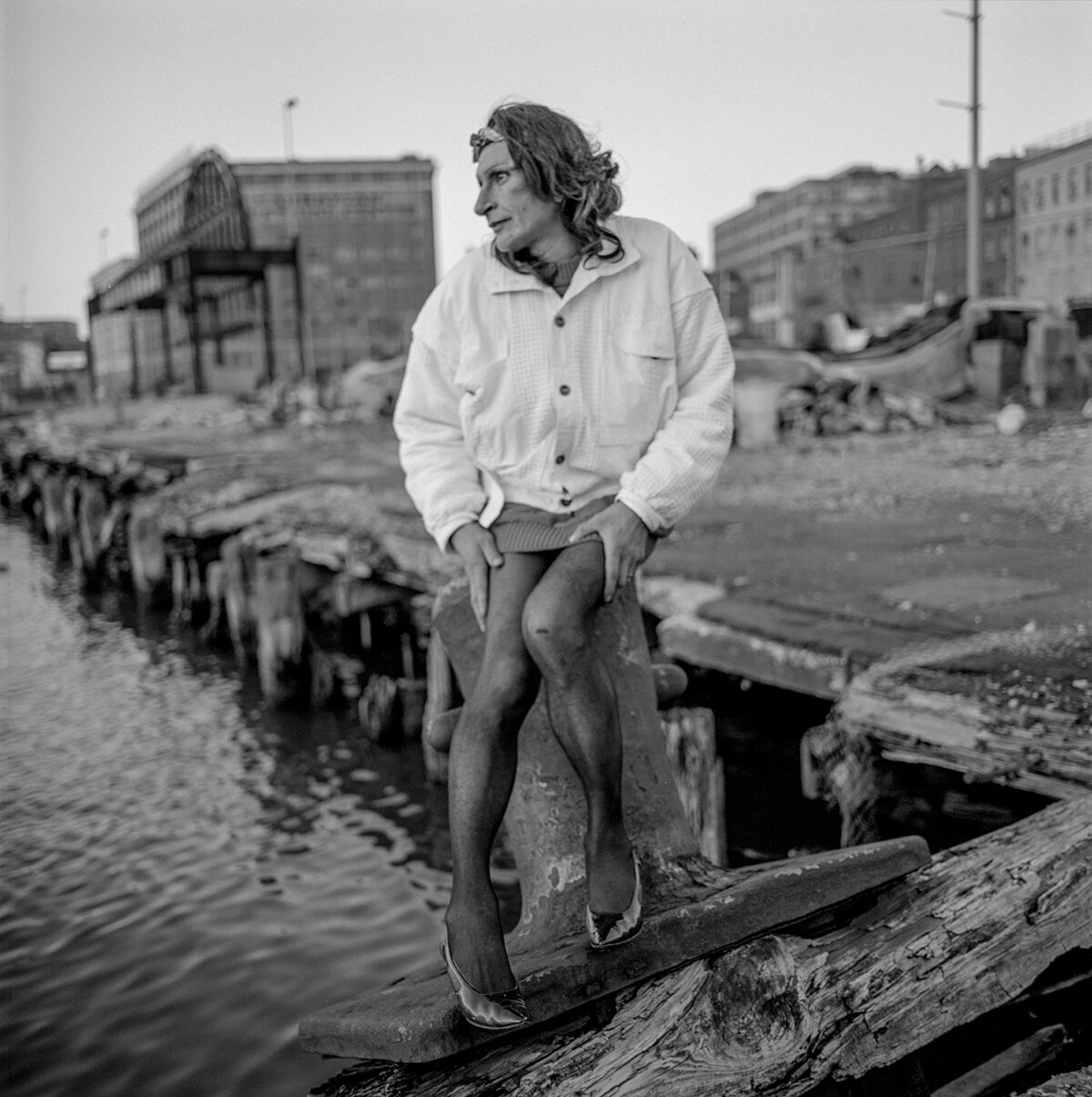
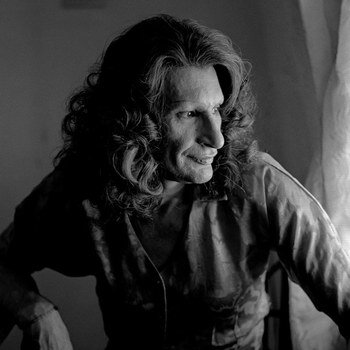
Trans Figures in History Pt. 1: Christine Jorgensen
It all begins with an idea.
Christine Jorgensen
When you think of trans visibility and notable trans people who are out in the world being their authentic selves and contributing to society while simultaneously trying to improve the lives of trans people, who do you think of? I think of people like Laverne Cox and Janet Mock and so many others. For me the earliest example of trans visibility would be Marsha P. Johnson and Sylvia Rivera considering their involvement in the gay liberation movement. I didn’t expect to come across someone who predates them. That person was Christine Jorgensen.
I had come across Christine in an article done by Samantha Reidel at Them.us and was astonished to discover that Christine had received peak celebrity status for being trans. However, the celebrity status that she received, though it allowed to her have a career, also dehumanized her in a way because of the American public’s obsession with her body. She was looked at as more of an oddity than a person at times. She had to continuously take back her humanity throughout her life and it led her to write an autobiography that was published in 1967. She told her story through her eyes. Christine Joregensen: A Personal Autobiography gave humanity back to a person who was continuously being disrespected and dehumanized. I recommend that you guys give her book a read! I just recently purchased it and plan to read it myself. My reading list is never ending!
Christine Jorgensen was born in the Bronx to Danish parents in 1926 and lived a relatively standard middle-class life. As a small child and then a teenager, she constantly struggled with her sexuality and gender identity. She was known to people around her as the boy with feminine tendencies but it was something that just came natural to her. In that time, gender identity was not a very talked about issue and neither was homosexuality. Society didn’t have use of the majority of the terminology we have today so as a young queer person you felt something or knew something about yourself but never had a way to put it into words. Combined with the rigidity of society's attitude towards sex and gender identity in the 20th century and the strict adherence to the gender binary, so many queer people were confused, scared, and depressed. You felt like you were the only one in the world. In the mid 20th century the topic of homosexuality was starting to be talked about more and there were terms being developed and studies being done but for a transgender person there wasn’t much to go on. You were left to figure things out in the dark.
Christine had tried to take on the traditional gender roles that had been assigned to her at birth and even went so far as joining the army after high school in 1945. Before she was drafted in (only to receive a desk job), she was rejected twice by the army because of her small physical stature. While in the army she still never seemed to fit in with the other men there and after an honorable discharge (after only being in the army for a little over a year), she returned home. She had a dream of being a photographer and attended classes at the Progressive School of Photography in New Haven, Connecticut after a short stint in Hollywood where she had originally wanted to start her photography career. It was there that she first opened up about her gender identity to a close friend but at the time didn’t have words to describe what she was feeling on the inside.
In 1950 at the age of 24, Christine set sale for Denmark to seek the answers she had always wanted. To her parents’ knowledge, she was simply going on a sightseeing trip but it was so much more than that. While there she met Dr. Christian Hamburger who explained to her that it was very possible that she could be transsexual (also note that there is a difference between transsexual and transgender). On September 24, 1951, Christine began her series of surgeries to become the woman she always knew she was. In October of 1952 her surgeries were completed and in June of 1952 she came out to her family. Prepared to make a clean break from her family if they were to reject her, Christine was surprised to find that her parents accepted her and were more than willing to accept her as their daughter and love her unconditionally. What amazes me about her story is that her family accepted her fully and wholeheartedly. For the time period that she was in I find that to be incredible. If only all trans people and queer people as a whole were able to receive that level of love and acceptance. It would save so many lives.
In February 1953, Christine returned to the United States with every intention of living as normal a life as she possibly could. She had planned to start her photography career and make a film about her travels in Denmark but all of that was nixed when it was leaked to the press that she had undergone gender reassignment surgery. The story of how this information leaked is so ambiguous because some reports say that her family was pressured by the press to hand over the coming out letter she sent to them, others say that a close family friend betrayed he or a lab technician at the hospital where she received care. Whichever story is true, it skyrocketed her into national stardom and instead of belonging to herself it seemed that Christine would now belong to the American public. She was constantly hounded by paparazzi and was at the center of a media whirlwind where papers and magazines wrote articles poking fun at her and misgendering her. There were scientists and other members of society who tried to use to her to push their agenda that being transgender was a mental illness.
Heteronormative ideas were pushed onto her. People assumed that she would marry a man and fully take on the traditional roles of a woman of that time. She states herself that she fell in love twice but a marriage never happened. She had been denied a marriage license because her birth certificate stated that she was male and was also denied the right to use the women's restroom in some places (sound familiar?). Christine became so relatable to other Americans questioning their identity that Denmark moved to ban non-Danish people from receiving gender reassignment surgery there. They received so many letters and requests that they were overwhelmed.
In light of her fame she chose to use it for good. She started to become the voice of queer people everywhere, especially gender non-conforming people. She also used her fame to start a nightclub act where she performed all around the country and the world. She became known for performing to the song "I Enjoy Being a Girl". Later in life she began to lecture at universities about herself and queer issues and it was estimated that she talked to over 200,000 students in all and was well received. With her lecture series she was able to talk about her personal story and enlighten those who had no true understanding of the meaning of gender identity and no true understanding of queer people. She proved that trans people were complete, functioning members of society despite the continued rhetoric that LGBT people were mentally ill and suffering from something that shouldn’t happen to a “normal” person. When you watch and listen to interviews that she had done she was so willing to answer all and any questions about herself. Personal questions about her love/sex life and even her anatomy were discussed. By today’s standards so many of these questions would be deemed extremely invasive and offensive (which honestly, they were) she was willing to answer because she felt it was the only way to help society truly understand. It takes a very large amount of strength to undergo that on a regular basis.
The injustices and dehumanization Christine endured is extremely relatable to trans people today. Something I can’t help but think about is how she would have been received in the world if she were black. Would she have received the same national attention (no matter how misguided and cruel at times)? Would she have been treated in an even more hostile manor? Christine was the product of a white middle class upbringing. She was afforded the means to go about the exploration of her gender identity in relatively safe manor. She had a career as a performer, an activist, a writer. People were willing to listen to what she had to say especially on the topic of human sexuality, which became more and more of a hot topic throughout the 20th century. She was one of the great catalysts of that movement. She even had a movie made about her life in 1970 called The Christine Jorgensen Story. How would all of this have differed for a trans person of color? More specifically a trans woman of color in this time period?
The biggest thing that we can take away from Christine’s story is the importance of queer visibility and the importance of communication between human beings. Throughout her life Christine opened herself up to the world as a performer and a public speaker and took the platform that her fame gave her to advocate for queer people. She realized that the conversation must be had and the tough questions answered. I think that she would be happy to know that trans and queer visibility as a whole is constantly growing. There is still a very long way to go until all trans people are supported and safe but groundwork has been laid. If you look below you will find pictures and an interview and performance from 1982. I urge you all to give her autobiography a read (and google her) and think about the queer people in your life. Think about what you can do to contribute to the protection and well being of those queer people around you. This month we saw the Supreme Court begin the discussion of whether LGBT people can be discriminated against in the workplace, the lives of trans woman of color are at stake as more and more of their deaths come to the surface, many queer youth are homeless and suffering from bullying and depression. Where do you fit into this? How can you help? We all have a part to play in the fight for equality!
The Work We Sit Upon
It all begins with an idea.
Lubaina Himid
One of my favorite things to do is look for art exhibits around New York to go to. I did this when I first graduated college to pass the time between applying for jobs and for any post grad person it may be a long, long time until something comes through for you. Surprisingly enough, there were a lot of open galleries in New York where you could just walk in for free and enjoy the art. So, if you’re on a budget this could be a rather affordable past time (that is if you’re into art). My favorite source for finding art exhibits is Time Out. You go on their website and there’s a whole section dedicated to art and museums and this is where I came across the exhibition of an artist I had never heard of before, Lubaina Himid. Plot twist! This exhibit, unfortunately, wasn’t free since it’s at the New Museum of Contemporary Art on Bowery Street but if you’re a student with a student ID (or someone who never got rid of their ID and looks 18 still) and you have $12 lying around, head on over! The New Museum also has pay as you wish days on Thursdays from 7 – 9pm.
In this exhibition I learned a little bit about Lubaina Himid and a whole art movement that happened in the UK in the 80s and 90s called the British Black Arts Movement. This was something that I had never come across in my studies of art history while in college (I’m pretending to be shocked) and I’ve now become interested in learning more about it. I've had some trouble actually finding out much about this movement, so who knows, this could be a new project for me.
It’s no surprise that racism, discrimination, and prejudice existed in other places aside from the United States. Throughout history people of color have used this to fuel their fight for equal rights and tell their stories in whatever form that comes in. It’s that premise that fed the British Black Arts Movement and is what feeds Lubaina Himid and her work. The British Black Arts Movement was founded in 1982 with the idea of creating discourse in British culture about race and gender and consisted of artists like Rasheed Araeen, Sonia Boyce, Claudette Johnson, and of course, Lubaina Himid. They were members of the BLK Art Group which was started in 1979.
This specific exhibit was based around her paintings and sculptures from this past year which had a theme of black togetherness and addressed the effects of colonialism. The statement piece of this whole exhibit was a free form sculpture of a deconstructed ship lined with cow shells to reference the significance of the slave trade in the oppression of people of color and the plundering of the African continent. It was called Old Boat/New Money. The way that this sculpture is configured makes it look like it could collapse at any moment and if you really think about it, that’s what happened with slavery following the Civil War. Looking at the effects of the collapse of slavery and how it decimated the economy in the south makes you think about how unsustainable this economy was.
Aside from that sculpture, there were a couple paintings of black workers working on textiles. This was a homage to Himid’s mother who was a creator of textiles as a profession. She used this setting to show black people working together towards a common goal. In the exhibit, it was expressed that Himid felt that black togetherness was not something that was commonly expressed in art. This made me think about what black togetherness looks like and also how people of color are portrayed in art.
To me black togetherness is the Underground Railroad, the Civil Rights Movement, the Black Lives Matter movement, and so many other major events and organizations in American history orchestrated by people of color. People of color have always possessed the ability to unite in times of crisis, danger, and pain so that we can advocate for ourselves and fight for out right to exist. Himid portrays that underlying meaning in her paintings. She portrays it in such a joyful way with bright colors and rich brown skin tones. That’s who people of color are right? Bright, filled with color, and exuberance! We come together when we need to and that’s important. In this current social and political climate we have to more and more.
Lubaina’s exhibit was called Lubaina Himid: Work from Underneath for a reason. To me it means that in the history of people of color we sit upon the hard work of our ancestors. The “work from underneath”. Because they worked from underneath, we can now work from underneath for the next generation and hand them a world that is better than how the world is now. Growth! That’s what life is about…growth. Himid's work helps solidify the importance of not just black art but art of any non white race. We are so often fed the history of white culture and art (sometimes to our own detriment), but not our own history and culture in it's entirety and that's why what we do in our art matters. That's how I plan to use my talents as an artist.
When I sit down to start a script or think about a collection I want to design, I think about how brown bodies can play into that narrative I am creating with my work. Representation matters and artists of color should always have that on their minds as they create. We represent ourselves until we enter into the norm and are known and fully recognized. This may sound like a form of assimilation to some but to me it's about helping to create a more level playing field that allows all people to prosper. Lubaina's work is about unity and that's what I connected with the most.
The First Entry!
It all begins with an idea.
I’ve been juggling so many ideas on what my very first entry here would be. Indecisiveness is one of my key personality traits. So, I’ve decided that I’m going to do all of my ideas but just one at a time (I know genius). This week I am going to talk about something that has become a small passion of mine in the last year. The topic I am speaking of is LGBTQ history! Buckle up because this is going to be a long one but completely worth it. You will most definitely learn something and hopefully be inspired!
You probably have heard in the last few months that a few states across the country have implemented laws that require public schools to include LGBTQ history in their curriculum. There are actually only four states in the country currently that teach it or eventually will; New Jersey, Illinois, California, and Colorado. California was a trailblazer having had their law in place since 2011. New Jersey, Colorado, and Illinois followed suit this year. News like this proves that this country is moving in a new and more accepting direction. To teach about the contributions of queer people throughout American history is to teach American history in its entirety and show that queer people have always existed, we have always contributed to society, and continue to do so. Laws like these promote more than tolerance (because I don’t think tolerance equates to acceptance), they promote the acceptance of queer people in our society and in our personal daily lives. Through knowledge can come understanding.
Allow Me To Introduce Myself…
It all begins with an idea.
Hey there and welcome to my blog! My name is Khari and I am a Fashion Designer, actor, TV/movie buff, and all-around drama queen living in New Jersey right outside NYC! Somehow, you found your way here. Either because you probably spend too much time on google, or I spammed your newsfeed on every social media site that’s hot right now, or you just really love fashion and art and love reading things about fashion and art. In any case, thanks for stopping by!
I figure that this blog is going to be what it looks like when one person decides to go on a journey with themselves and wander around the physical world and the world within their heads. Since graduating college about two and half years ago, like many college graduates, I have been actively searching for the things that work best for me, the things that make me whole and feed my passions. It can be difficult to do that in a world that’s overrun with information, opinions, and judgement. It’s safe to say that it’s possible to lose yourself post-graduation, which is exactly what I did. I went from having all this energy and ambition to being exhausted and bogged down but the realities of actual life. College is such a bubble! I guess we can cue all the baby boomers now who complain that all us millennials are lazy and know nothing of the world and have no real means to succeed. I beg to differ!
Our world is 10 times different from theirs. The world you and I exist in changes from every year, to every month, to every day, to every second, and life has become a constant game of catch up. We have the means to adapt more than those who came before us think we do and more than we even think we can. It just takes a little bit more maneuvering and expecting the unexpected. I’m learning that more and more. In all the noise we just need something or some things to focus on. This blog will be one of those things I focus on and place my energies.
This blog will be a hodge podge of my thoughts on art exhibits all around NYC, fashion, my own artistic journey, and any and all of my interests (which there are many). I may even throw in some LGBTQ history from time to time considering that that has been one of my recent journeys in the last year. This blog will also be me spending some time with myself (even though the notion of any actual time with myself is daunting to me) and sometimes sharing that journey with you because let’s face it, we all need someone to relate to. Now that I’ve written a deeply brooding monologue about the human experience and self-exploration, look out in the next two weeks or so for my very first official entry! I am so excited for this journey and I hope you’ll ride along with me!


